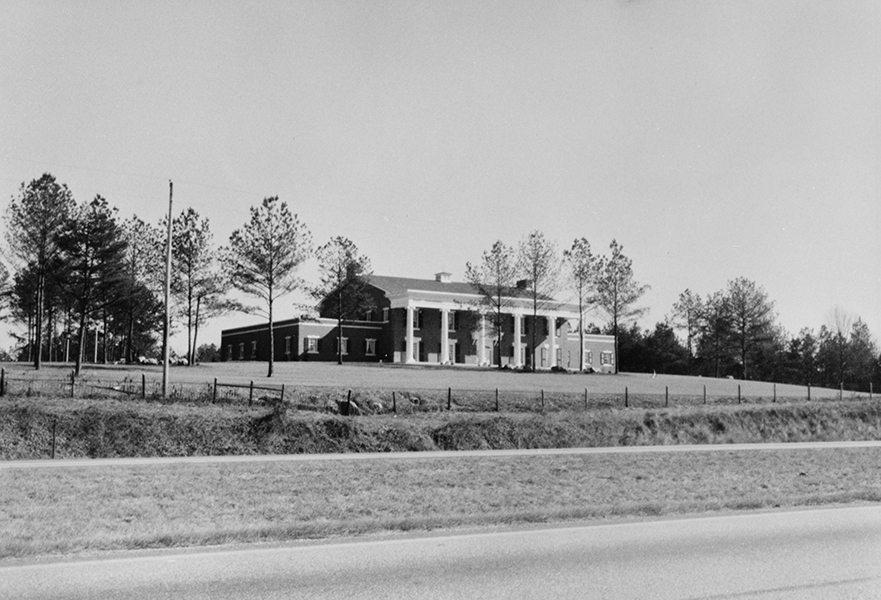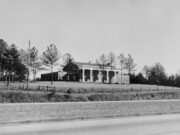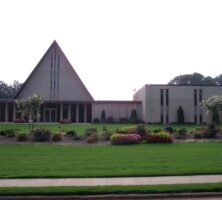The Seventh-Day Adventist Church has a strong presence in Georgia that dates to 1872. Congregations in Georgia are part of two administrative church conferences, both with headquarters in Georgia. The predominantly white Georgia-Cumberland Conference includes churches in Georgia, North Carolina’s Cherokee County, and eastern Tennessee. The South Atlantic Conference consists of the African American Adventist congregations throughout most of Georgia, North Carolina, and South Carolina. These conferences have grown significantly from 16,298 members in 1964 to 53,659 members in 2000.
The Adventist Church developed in the 1840s in the Northeast as part of a movement led by William Miller, who believed that the second coming, or advent, of Christ was imminent and that the date for Christ’s return could be determined. After Miller and his adherents failed at several attempts to set this date, Miller’s followers splintered into different groups.
Seventh-Day Adventists
The largest and most significant group to emerge, the Seventh-Day Adventists, formed on the basis of three major beliefs. The first concerns what is known as the Sanctuary Doctrine, which construes Miller’s last estimated date for Christ’s return, October 22, 1844, as a spiritual rather than a physical event. Miller’s prophecy was based on a verse in the Old Testament book of Daniel that refers to the cleansing of a sanctuary, which Miller and his followers interpreted to mean the earth. After the date had passed, the remaining “Millerites” reinterpreted “sanctuary” as a reference to heaven.

Courtesy of Georgia Archives.
The second belief is celebrating the Sabbath on the seventh day (Saturday), as prescribed by the Ten Commandments. Finally, and most important, is the belief that a former Millerite named Ellen G. White was receiving direct revelation from God, which gave her prophetic authority.
The new church formed in 1860 and continued the movement’s original emphasis on the imminent physical return of Christ. The Seventh-Day Adventists developed distinctive beliefs about events that would occur at the end of the world, including a 1,000-year reign of Christ, the righteous ascending to heaven, and the final annihilation of the wicked.
Adventist work in Georgia has shared the movement’s distinctive beliefs and heritage. The church’s literature circulated and produced converts in the state as early as 1872. In 1876 the first Adventist worker, C. O. Taylor, arrived in Quitman. He was followed in 1887 by several other church missionaries, including George W. Anglebarger, Charles Bliss, and Charles F. Curtis. Finally, in 1901 the Georgia Conference was established in Austell, with C. A. Hall as president. Throughout the next thirty years, the work in Georgia grew, as churches and self-supporting medical institutions were established. By the time the Georgia Conference merged with the Cumberland Conference in 1932, it included 47 churches with 2,490 members. The headquarters of the new conference was located in Atlanta.

Photograph by Yale A. Douce
African American Adventists
The African American Adventist churches in Georgia experienced similar growth after the initial work of C. O. Taylor. Their earliest activities involved the opening of schools and quickly developed into the establishment of health care facilities and a Young Women’s Christian Association in Atlanta. These efforts occurred under the guidance of leaders like Anna Knight, L. C. Sheafe, and M. C. Sturdevant. When the South Atlantic Conference was organized in 1946, African American churches numbered 62, with a membership of 3,614.
Adventists Today
Adventist churches of all varieties have continued to develop in Georgia and are presently part of a denomination with 13 worldwide divisions comprising 203 countries and areas, more than 5,000 schools, more than 700 health care facilities, and a membership in excess of 12 million.
Adventists in the state sponsor health care facilities, hospitals, a youth campground, and thirty-three educational institutions, most of which are K-8 schools. Two secondary schools in Georgia are affiliated with the church: Atlanta Adventist Academy and Georgia-Cumberland Academy in Calhoun.









